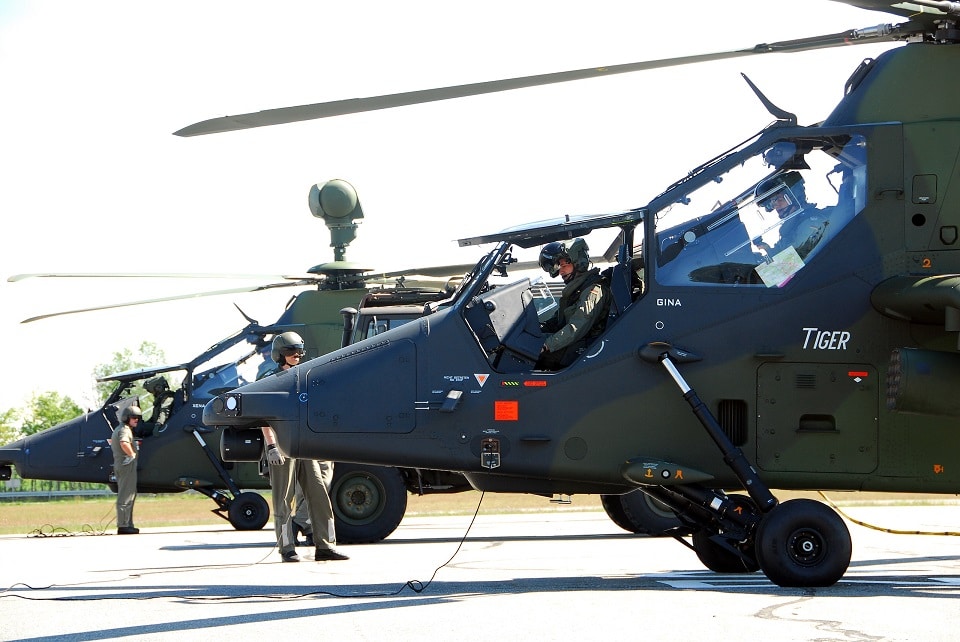Aerospace
Germany to retire all its Tiger attack helicopters by 2038

Germany plans to phase out its Tiger combat helicopters by 2038 and gradually replace the fleet with H145M light military helicopters, made by Airbus. According to a statement from the German Defence Ministry.
The decision was anticipated as both France and Spain committed to join in the initiative in 2022, Germany had long since virtually withdrawn from a global effort to update helicopters. Berlin has remarked on the Tiger’s poor operational availability as a result of technical issues on numerous occasions.
France and Spain launch Tiger MkIII programme(Opens in a new browser tab)
In support of a story by Sueddeutsche Zeitung, a representative for the German Defence Ministry stated that the Tiger fleet would be phased out by 2038 without any further actions.
The Military Programming Law does not contain any confirmation of the Mk3 Tiger programme. General Pierre Schill, Chief of the General Staff of the French Land Army [CEMAT], stated that the issue will be one of “taking into account the elements that the conflict in Ukraine will provide us to specify the conditions of use of these helicopters, in particular depending on the evolution of aerial drone capability.”
The MkIII initiative to update the helicopters had too many risks in terms of cost and timely execution for the ministry to participate in, she noted. The ministry had examined many scenarios.
Cyprus orders six H145Ms for its National Guard(Opens in a new browser tab)
She claimed, without providing specifics on numbers and pricing, that the ministry intends to acquire H145M light military helicopters from Airbus in order to achieve its NATO obligations in the future rather than keep the Tiger operational. By the end of the year, the ministry intends to submit a contract for approval to the budget committee of the parliament.

Aerospace
Boeing Transfers Rocket Stage to NASA, Paving Way for Human Moon Mission

Boeing has achieved a significant milestone by providing NASA with the second core stage of the Space Launch System (SLS) rocket.
This crucial component, crafted at NASA’s Michoud Assembly Facility (MAF), is set to propel the Artemis II crew into lunar orbit, marking humanity’s return to deep space after a 50-year hiatus.
The monumental Boeing-built rocket stage, the largest element of the Artemis II mission, will embark on a journey aboard the Pegasus barge, traveling 900 miles to NASA’s Kennedy Space Center.
Comparison of two legendary aircraft B777x vs B747 aircraft:Click here
Upon arrival, it will be meticulously integrated with other essential Artemis II components, including the upper stage, solid rocket boosters, and NASA’s Orion spacecraft within the iconic Vehicle Assembly Building. This intricate integration process is a vital step toward the eagerly anticipated Artemis II launch, slated for 2025.
“Boeing-built products helped land humankind on the moon in 1969, and we’re proud to continue that legacy through the Artemis generation,” remarked Dave Dutcher, vice president and program manager for Boeing’s SLS program. “Together, with NASA and our industry partners and suppliers, we are building the world’s most capable rocket and paving the way to deep space through America’s rocket factory in New Orleans.”
NASA, Lockheed Martin Reveal X-59 Quiet Supersonic Aircraft:Click here
The delivery of Core Stage 2 marks a significant achievement in the evolution of the SLS rocket. Towering over 200 feet and powered by four RS-25 engines, this core stage, coupled with two solid-fueled booster rockets, will generate a staggering 8.8 million pounds of thrust. This immense power is crucial to launching Artemis II and future missions into the vast expanse of space.
The SLS rocket stands unparalleled in its capability to transport both crew and substantial cargo to the moon and beyond in a single launch. Its extraordinary capacity will facilitate the delivery of human-rated spacecraft, habitats, and scientific missions to destinations including the moon and Mars, ushering in a new era of space exploration.
-

 Travel1 week ago
Travel1 week agoAir India to Expand US Operations with Three New Routes After a Decade
-

 Travel2 weeks ago
Travel2 weeks agoWhy We Should Avoid These Stamps in a Passport
-

 Airlines1 month ago
Airlines1 month agoInvestigations Reveal Fake Chinese Titanium in Boeing and Airbus Jets
-

 Tech4 weeks ago
Tech4 weeks agoChina’s CATL Plans 1,800-Mile Electric Plane Launch by 2027
-

 Airport3 days ago
Airport3 days agoTop 10 Largest Airports in the World by Size
-

 Aerospace4 weeks ago
Aerospace4 weeks agoChina’s Fighter Jets Turn Wings into Autonomous Drones
-

 Airlines4 days ago
Airlines4 days agoAir India Rolls Out A350s for Delhi-New York JFK and Newark Routes
-

 Defence3 weeks ago
Defence3 weeks agoBoeing Enhances Chinook with New Engines and Block II Upgrades at $96 Million







